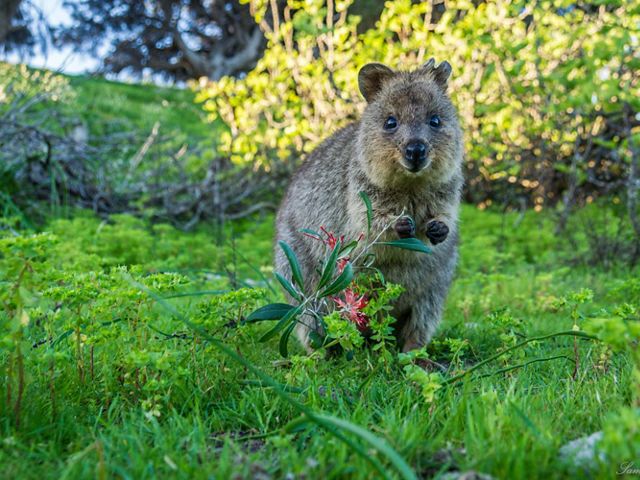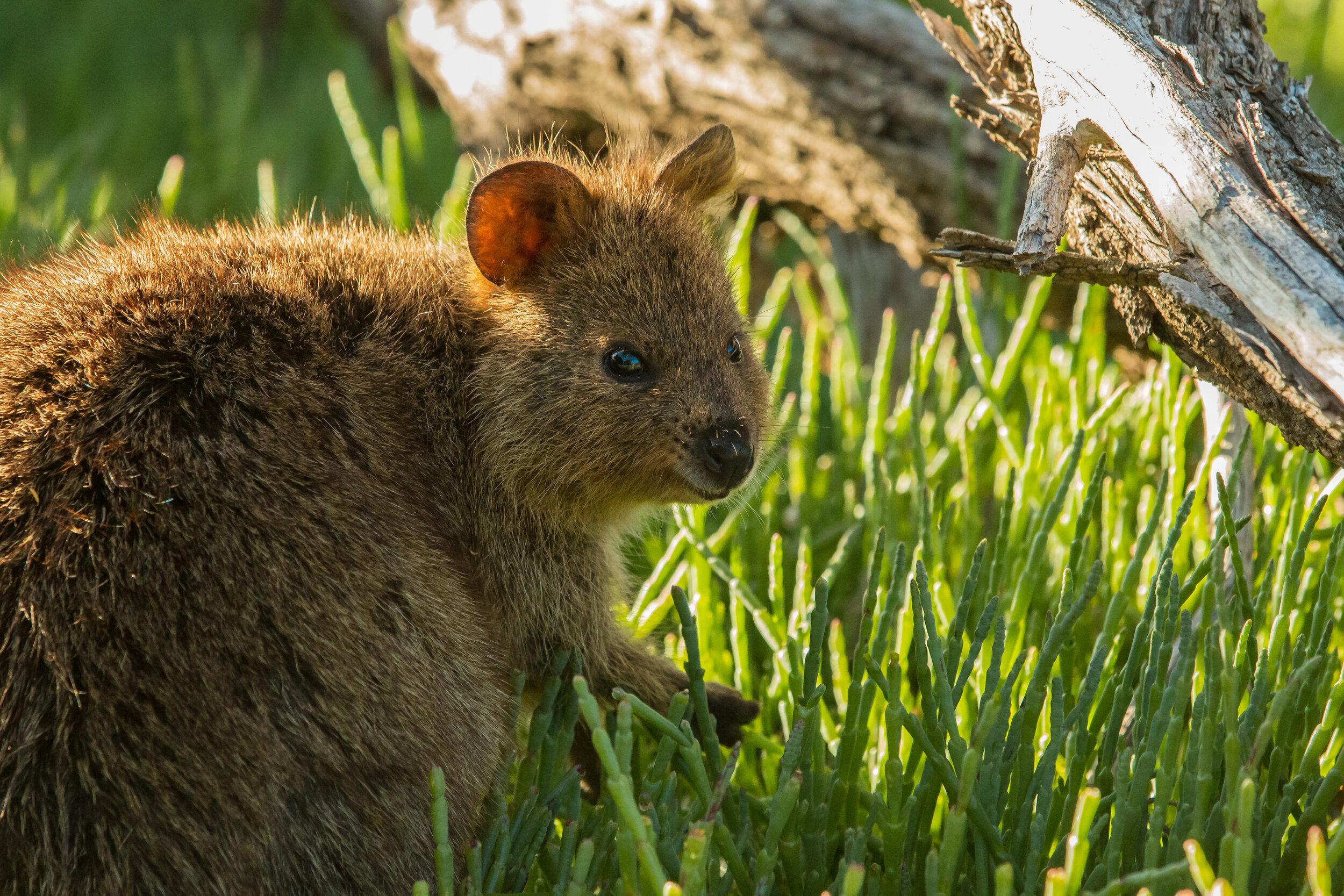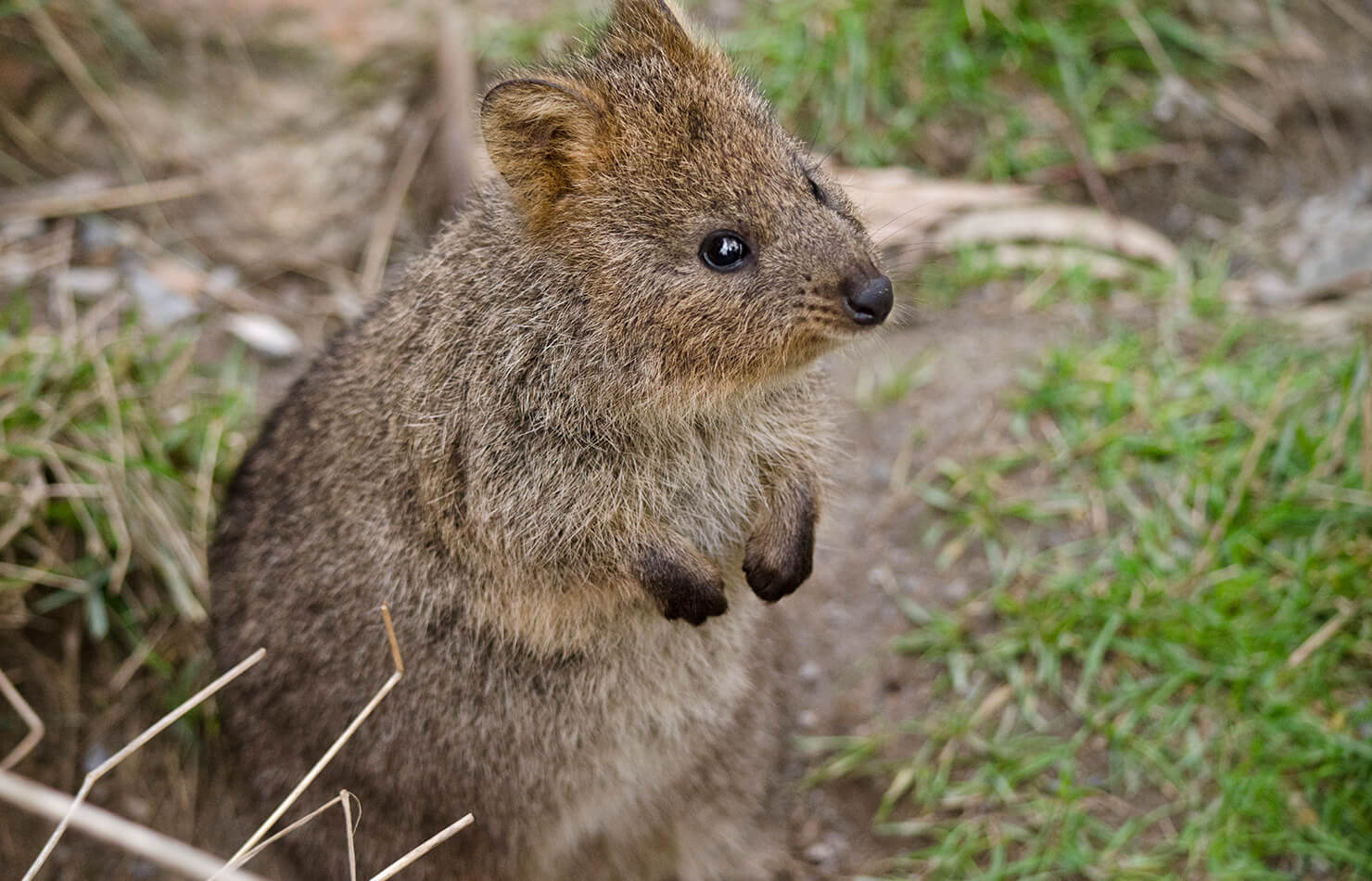Habitat & Lifestyle
Quokkas are nocturnal animals; they sleep during the day in Acanthocarpus preissii, using the plants' spikes for protection and hiding. Quokkas have a promiscuous mating system. After a month of gestation, females give birth to a single baby called a joey. Females can give birth twice a year and produce about 17 joeys during their lifespan. The joey lives in its mother's pouch for six months. Once it leaves the pouch, the joey relies on its mother for milk for two more months and is fully weaned around eight months after birth. Females sexually mature after roughly 18 months. When a female quokka with a joey in her pouch is pursued by a predator, she may drop her baby onto the ground; the joey produces noises which may serve to attract the predator's attention, while the mother escapes. During the Pleistocene period, quokkas were more abundant and living on open landscapes. When the Europeans arrived in Australia, they introduced new species, some of which became predators to the quokkas. This caused the habitats of quokkas to eventually shift to islands and forests, where there were minimal predators and more vegetation. In the wild, the quokka's roaming is restricted to a very small range in the South West of Western Australia, with a number of small scattered populations. One large population exists on Rottnest Island and a smaller population is on Bald Island near Albany. The islands are free of certain predators such as red foxes and feral cats. On Rottnest, quokkas are common and occupy a variety of habitats, ranging from semiarid scrub to cultivated gardens. Prickly Acanthocarpus plants, which are unaccommodating for humans and other relatively large animals to walk through, provide their favourite daytime shelter for sleeping. Additionally, they are known for their ability to climb trees. Like most macropods, quokkas eat many types of vegetation, including grasses, sedges and leaves. A study found that Guichenotia ledifolia, a small shrub species of the family Malvaceae, is one of the quokka's favoured foods. Rottnest Island visitors are urged to never feed quokkas, in part because eating "human food" such as chips can cause dehydration and malnourishment, both of which are detrimental to the quokka's health. Despite the relative lack of fresh water on Rottnest Island, quokkas do have high water requirements, which they satisfy mostly through eating vegetation. On the mainland, quokkas only live in areas that have 600 mm (24 in) or more of rain per year. The quokkas chew their cud, similar to cows.


